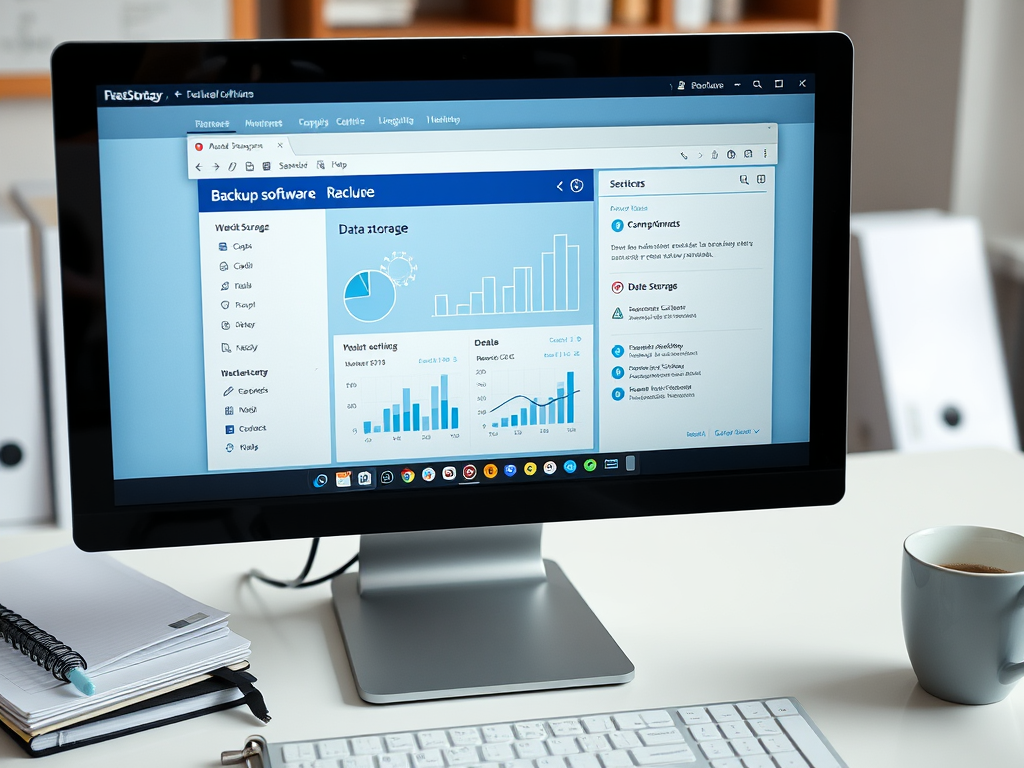In an era where data breaches, system failures, and hardware malfunctions can occur without warning, the question of how to effectively backup and store electronic files looms large. Many individuals and businesses may hesitate, thinking about the costs involved, yet forgoing backups can lead to far more significant losses in data and finances. The challenge is balancing budget constraints with the urgent need for reliable data protection. So, how do we navigate the complex landscape of data storage options while keeping an eye on our wallets? This article aims to explore the costs associated with different backup methods, dispelling myths and presenting options that cater to various needs and budgets. Understanding the implications of data storage goes beyond just the dollar signs; it encompasses peace of mind and security as well.
Understanding the Importance of Backing Up Electronic Files

The digital age has elevated our reliance on electronic data, highlighting the critical need for secure backup solutions. Data loss can occur from numerous unforeseen events, including hardware failures, accidental deletions, or ransomware attacks. These incidents can have devastating consequences for both individuals and organizations, leading to lost revenue, damage to reputation, and wasted resources. Therefore, figuring out a robust backup strategy is not just a technological choice; it’s an essential component of a proactive data management policy. Investing in a well-rounded backup solution translates to not only safeguarding your data but also ensuring business continuity and resilience. Despite the upfront costs, the repercussions of ignoring backup solutions can compound quickly.
Neglecting data backups can usher in various risks that are often underestimated. Widespread consequences can include the inability to recover critical business operations, resulting in lengthy downtime. From a personal standpoint, losing photographs, financial records, or important documents can cause lasting emotional distress. Additionally, restoring lost data might involve hefty investments in data recovery services, which can be an unplanned strain on finances. In an increasingly digital world, the repercussions extend beyond just inconvenience; they can severely impact one’s security and sense of stability. The potential for lost data further illustrates the need to consider the long-term costs of inaction.
Factors Influencing Backup and Storage Costs

Understanding the various factors that contribute to backup and storage costs is crucial for making an informed decision. This section examines how technology, storage needs, and user preferences can drastically alter price points and options available. The type of backup solution chosen plays a focal role in determining overall expenses. Furthermore, the scalability and ease of use of the backup solution can influence costs, particularly for businesses looking to expand or adjust their storage options over time. Lastly, ongoing maintenance and operational costs should not be overlooked, as they can accumulate over time. Identifying these elements allows users to weigh their options more effectively and select a storage solution that meets their demands without overshadowing their budgets.
Here are some of the most common types of backup solutions available today:
- Cloud Storage: Offers easy access and flexibility but often comes with recurring fees.
- External Hard Drives: Provides a one-time cost but may require physical management and maintenance.
- Network-Attached Storage (NAS): Useful for businesses with large data needs, but involves setup and operational costs.
Analyzing the Costs of Different Backup Methods
This section delves deeper into the financial implications of various backup methods. Understanding associated costs is vital when determining the appropriate backup solution for individual or business needs. Not only do we need to look into initial expenses but also consider ongoing operational costs and potential hidden fees of each backup option. Below, we provide a table that showcases the costs related to three primary backup methods, allowing for a straightforward comparison to aid decision-making:
| Backup Method | Initial Costs | Ongoing Costs | Pros | Cons |
|---|---|---|---|---|
| Cloud Storage | $10 – $200/year | $5 – $50/month | Accessible anywhere, scalable | Recurring fees, internet dependency |
| External Hard Drives | $50 – $300 | No recurring fees | One-time purchase, portable | Physical management, risk of loss |
| Network-Attached Storage (NAS) | $200 – $2000 | $10 – $100/month | Great for large data needs | Complex setup, higher initial costs |
As shown in the table, each backup solution presents its distinct set of costs, advantages, and disadvantages necessitating careful appraisal of individual or business needs. Making an informed choice can potentially lead to optimized expenses while securing critical data.
Budgeting for Backup: Finding the Right Balance
Creating a budget for backup and storage requires understanding your current and projected storage demands. It’s important to evaluate both immediate requirements and future growth to prevent excessive spending on unnecessary capacity. Balancing your needs with available resources is key to successful budgeting. Making a plan can help delineate which aspect of backup is most crucial for your situation, such as ease of access, quick recovery times, or enhanced security measures. It can also involve determining whether to invest in a long-term solution or an interim fix. Assessing these factors can lead to a well-rounded conclusion about which backup methodologies will yield optimal results without straining finances.
Evaluating Your Storage Needs
Determining the right amount of storage needed begins with understanding the types of data you possess and how often they change. In terms of personal use, consider the following factors:
- Type of files (photos, documents, videos)
- Frequency of file updates
- Volume of data currently used
- Projected data growth over the next few years
For businesses, factors may comprise customer data, employee files, and company records which might fluctuate more dynamically. This understanding will lead you to more accurate estimations of your optimal storage solutions and facilitate smarter purchasing decisions.
Long-term vs. Short-term Solutions
When selecting a backup solution, it’s essential to evaluate long-term versus short-term implications. Short-term solutions may be appealing due to lower initial costs but can result in increased expenses down the line. Here are a few key points to consider:
- Long-term investments are generally more cost-effective over time but may require higher upfront costs.
- Short-term solutions can leave you vulnerable to data loss if you need to switch backup methods later.
- Long-term solutions tend to be more reliable and reduce the chance of hidden fees.
Conclusion
In conclusion, the expense of backing up and storing electronic files can vary greatly based on individual needs and choices. With a clearer understanding of the costs associated with various backup methods, users can avoid pitfalls and select solutions that align with their requirements. By weighing the benefits and trade-offs, one can navigate the myriad options available and invest wisely. Backup solutions offer more than just protection; they ensure the longevity and professionalism of one’s data management practices. Ultimately, being proactive in your data strategy can enable you to safeguard your digital life and financial stability, transforming what seems like a burden into a fundamental investment.
Frequently Asked Questions
- Is cloud storage more expensive than physical storage? Not necessarily; it depends on the amount of data and the specific services chosen. Cloud solutions often have subscription fees, while physical storage requires a one-time purchase.
- What are the hidden costs of backup solutions? Hidden costs can include maintenance, software updates, data retrieval fees, and potential charges for exceeding storage limits.
- Can I rely solely on cloud storage for my backups? While cloud storage is convenient, it’s advisable to use a combination of methods (e.g., cloud and physical backups) for better data security.
- How often should I back up my files? It depends on the frequency of data changes; regular backups (daily, weekly, or monthly) are recommended based on individual needs.
- Are free backup solutions sufficient? Free solutions can be useful for light users, but they may lack features and security options offered by paid services.





